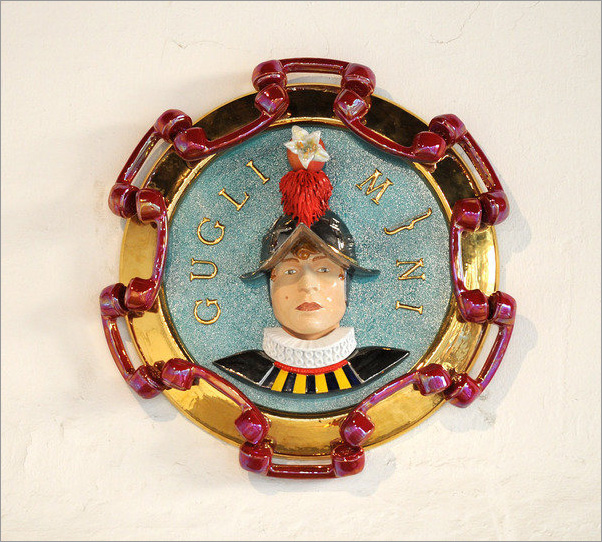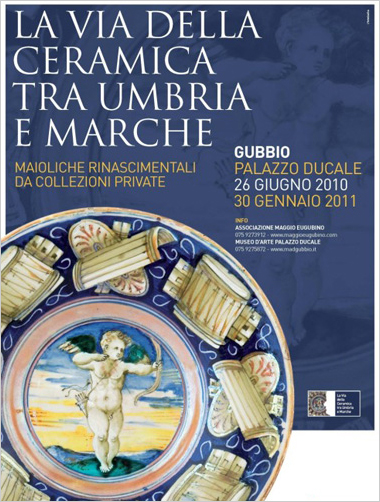July 23 – Sept. 25, 2011
Pesaro, Italy
 Ontani’s solo exhibition is a tribute to Pesaro, the city of Gioacchino Rossini, the composer of The Barber of Seville, and the city that has become prominent within Italy for his long-established tradition of pottery making and the long list of ceramic artists who lived and worked here, like Ferruccio Mengaroni and Nanni Valentini.
Ontani’s solo exhibition is a tribute to Pesaro, the city of Gioacchino Rossini, the composer of The Barber of Seville, and the city that has become prominent within Italy for his long-established tradition of pottery making and the long list of ceramic artists who lived and worked here, like Ferruccio Mengaroni and Nanni Valentini.
Between the previous Chiesa del Suffragio and the Loggiato, eight large ceramic sculptures, the ErmEstEtiche, portrait relevant historical characters. Among them RossiniAria, the sculpture that the artist has made especially for this exhibition. As it often happens in Ontani’s works, the artist himself plays the role of Rossini, combining a number of symbolic, literary, artistic and historical elements.
In the middle of the previous Chiesa del Suffragio stands the ErmafroDito Mignolo, a large ceramic sculture. On the walls the Vizi Capitelli, a collection of eight ceramic capitals that represent the seven deadly sins or capital vices plus one, added by the artist. It’s the capital of the boastfulness that plays with the suggestions of romanesque sculpture.
Commenting his Vizi Capitelli the artist says that they are not the Stations of the Cross but the Stations of the Pleasure Seeking. The space of the exhibition is sacred to the artist, even though the Church is not so anymore.
The exhibition includes some photo-ceramics too: Saint Sebastian, NarciGiuda, Saint Paul, Ecce Homo and Tobiolo.
Centro Arti Visive Pescheria
Corso XI Settembre 184, Pesaro
Ph: +39 721 387651
Email: centroartivisive@comune.pesaro.pu.it

